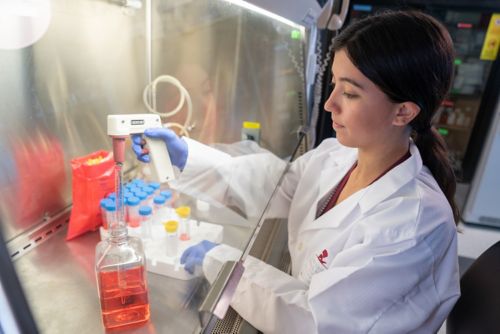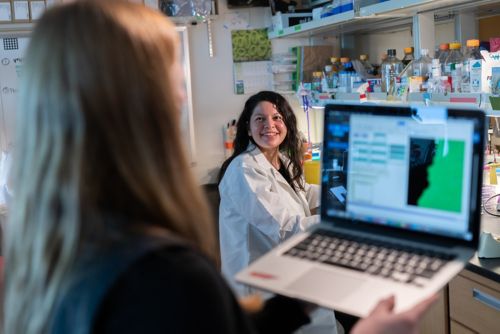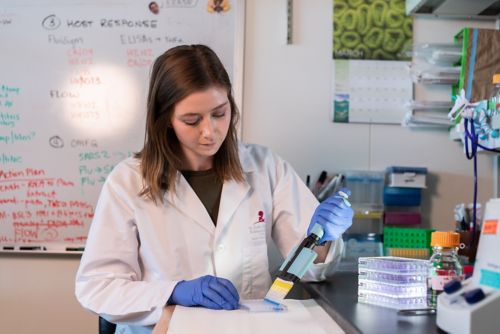St. Jude Family of Websites
Explore our cutting edge research, world-class patient care, career opportunities and more.
St. Jude Children's Research Hospital Home

- Fundraising
St. Jude Family of Websites
Explore our cutting edge research, world-class patient care, career opportunities and more.
St. Jude Children's Research Hospital Home

- Fundraising
Stacey Schultz-Cherry Lab
Exploring the interactions between viruses and their hosts, especially in high-risk populations
About the Schultz-Cherry Lab
There is an ongoing ‘arms race’ between viruses and their hosts. It is critical that we decipher the biology and behavior of these viruses to inform proactive solutions. Our laboratory works to better understand viruses, the disease they cause, their evolution and transmission and pandemic potential. Our efforts include work at the bench, and in the field. Ultimately, we hope to bolster and protect the health of the public and those at the greatest risk from viruses.

Our research summary
Our laboratory conducts state of the art research into the relationship between viruses and their hosts, how these interactions impact viral evolution and transmission, and ways the host fights back. We have a particular interest in how viruses impact those populations that are at the highest risk. Whether conducted at the bench or in the field, the work in our laboratory has “bench to bedside” as well as public health implications.
Our laboratory studies respiratory and enteric viruses. One line of research focuses on disease pathogenesis and susceptibility to infection, and we use innovative model systems – whether animal, primary cells, organoids, and samples from people – to better understand disease. We apply state-of-the-art approaches to our research, including single-cell sequencing , microscopy, CRISPR-Cas and RNA-Seq to look at cellular and innate immune and epithelial cells responses.

Another focus of research in our laboratory involves understanding how changes in the host can influence viral evolution. Hosts that are immunocompromised have a leaky “bottleneck” allowing viruses to change more rapidly and some of these changes could impact how efficiently the virus transmits to a new host or how effectively it can be blocked by our immune response. We then ask if any of these changes allows the virus to infect a new species. We explore the properties of viruses that make those significant leaps between species possible and have ongoing investigations throughout the world looking at the influenza virus at the animal-human interface. We are specifically working to hone in on those viruses that can make those inter-species jumps, characterize them, and understand their pandemic potential. This research program involves both research at the bench as well as in the field, working with colleagues primarily in South America to set up and conduct research studies. We are also launching a new line of field work that involves the use of video cameras in Chile to monitor interactions between difference species that may raise concerns or the threat of a new pandemic flu virus. We co-direct an NIAID-funded center tasked with identifying flu viruses with pandemic potential.
Finally, our laboratory explores the ways to make vaccines that more broadly protect all populations. We co-direct an NIAID-funded center tasked with the development of a universal flu vaccine and are the only one of three such centers that focuses on the impact of viruses on high-risk populations – for example, women who are pregnant, those with diabetes or those with obesity. Our work in this area involves vaccine development, immune response and human immunology studies, and the exploration of better diagnostic assays.

Selected Publications
Contact us
Stacey L. Schultz-Cherry, PhD
Member, St. Jude Faculty
Department of Host-Microbe Interactions
MS320
St. Jude Children's Research Hospital
Follow Us

Memphis, TN, 38105-3678 USA GET DIRECTIONS